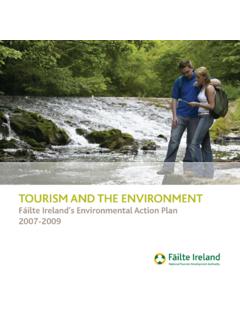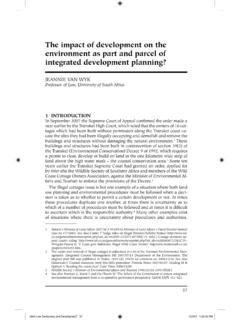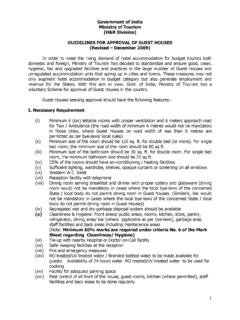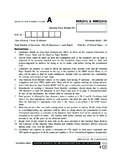Transcription of Grasslands needs pics - Notice Nature
1 Over 60% of Ireland is covered by grassland of one type or another and this does not include areas covered by annual crops, golf courses and lawns. Grasslands are economically important in Ireland as they account for much of our agricultural production and they also provide vital areas for amenity and tourism. In addition to the economically important grassland types there are also several grassland types of conservation value including orchid-rich calcareous Grasslands , coastal machairs, species-rich and neutral Grasslands , and wet Grasslands such the Shannon Callows. Improved grassland Improved grassland makes up a large proportion of Ireland's productive farmland. This type of grassland is heavily managed to maximise production. It is typically reseeded frequently, heavily fertilised and grazed or cut for silage.
2 The diversity of plant species it supports is low, since fertiliser favours the growth of faster-growing grass species over other plants. Where it is reseeded, the seed mix consists only of cultivars of perennial rye grass and white clover. Even where it is not reseeded, perennial rye grass, meadow thistle and nettle predominate. Also included in this category are amenity, recreational and landscaped Grasslands . Such Grasslands are often mown short Set aside and farmland and will be subject to application of fertilizer and herbicides. Plants typically found in this type of improved habitat include daisy, dandelion and clover. Semi-natural grassland Semi-natural Grasslands are Grasslands which are dependent on human intervention (through livestock grazing or mowing) but which are not intensively fertilised. As a result, they support more diverse plant and animal communities and are also important for birds and invertebrates.
3 grassland types included in this category are dry calcareous and neutral grassland , acid grassland , wet grassland and dry meadows / grassy verges. Some of our more interesting and endangered grassland habitats include dry limestone grassland such as the type seen in the Burren and also sometimes found on eskers. Eskers are long sinuous sand and gravel ridges, which were originally formed under the icesheets that covered Ireland during the Ice Age. Eskers are at risk from development pressures including road building, housing and sand and gravel extraction. Plants found in dry limestone grassland include common grasses such as bents, meadow-grasses, Meadow Foxtail, Timothy grass, fescues, Sweet Vernal-grass, Crested Dog's-tail, Cock's-foot and Yorkshire-fog. Common herbaceous plants and wildflowers include clover, Yarrow, Common Knapweed, Selfheal, Common Bird's-foot Trefoil, Cat's-ear, Lady's Bedstraw and Oxeye Daisy.
4 Dry limestone Grasslands may comprise a wide range of grasses and wild flowers. Species richness can be as high as 45 species per m2. Wet Grasslands are typically dominated by brushes and grass species such as purple moor grass, as well as wild flowers such as willow herbs and ragged robin. Case Study The Shannon Callows can be found on the flood-plain of the River Shannon. The fields flood in winter but are farmed through the summer using management methods compatible with the unique ecosystem that has developed in this area ( later cutting of the grass). The Callows are home to the endangered Corncrake which depends not only on the flooding of these meadows but also on the use of sensitive farm management techniques. In addition, internationally important numbers of Greenland White-fronted Geese also use the Callows in winter.
5 In recent times, a trend toward earlier cutting has been seen in the Callows, which will have consequences for the survival of the Corncrake. Legislation Wildlife Acts 1976 to 2000, EU Habitats Directive(92/43/EEC) EU Birds Directive (79/409/EEC) Flora Protection Order REPS Scheme What Can I Do? Farming: Adhere to Good Farming Practice. If you farm within protected areas, discuss farm management with your local wildlife ranger to find a regime that works for you but for wildlife too! Consider joining REPS, the Rural Environment Protection Scheme. Go to for details. Leave wildlife strips along the edges of fields Look after boundary features, such as dry stonewalls, trees and hedgerows. Not only will they add a positive visual element, they will also provide a variety of habitats which will increase the variety of plants and animals.
6 Construction Industry Where species rich grassland are to be lost to construction, collect seed and turf and create similar habitat nearby. Maintain strips along river banks to ensure a wildlife corridor is maintained Rely on mowing without fertiliser application or herbicides to maintain grassy landscaped areas; this will favour greater plant and invertebrate diversity. Local Authorities Provide space for semi-natural grassland in suitable amenity areas Review grass-cutting schedules to ensure they are compatible with local biodiversity Public Let your garden go a bit wild! Keep the use of lawn feed to a minimum and do not use herbicides. Rather than follow the trend for manicured lawns or low maintenance surfaces in your garden, opt for a low maintenance wildflower garden. Just make sure seed is locally sourced. Speak to Seed Savers about approved dealers.















